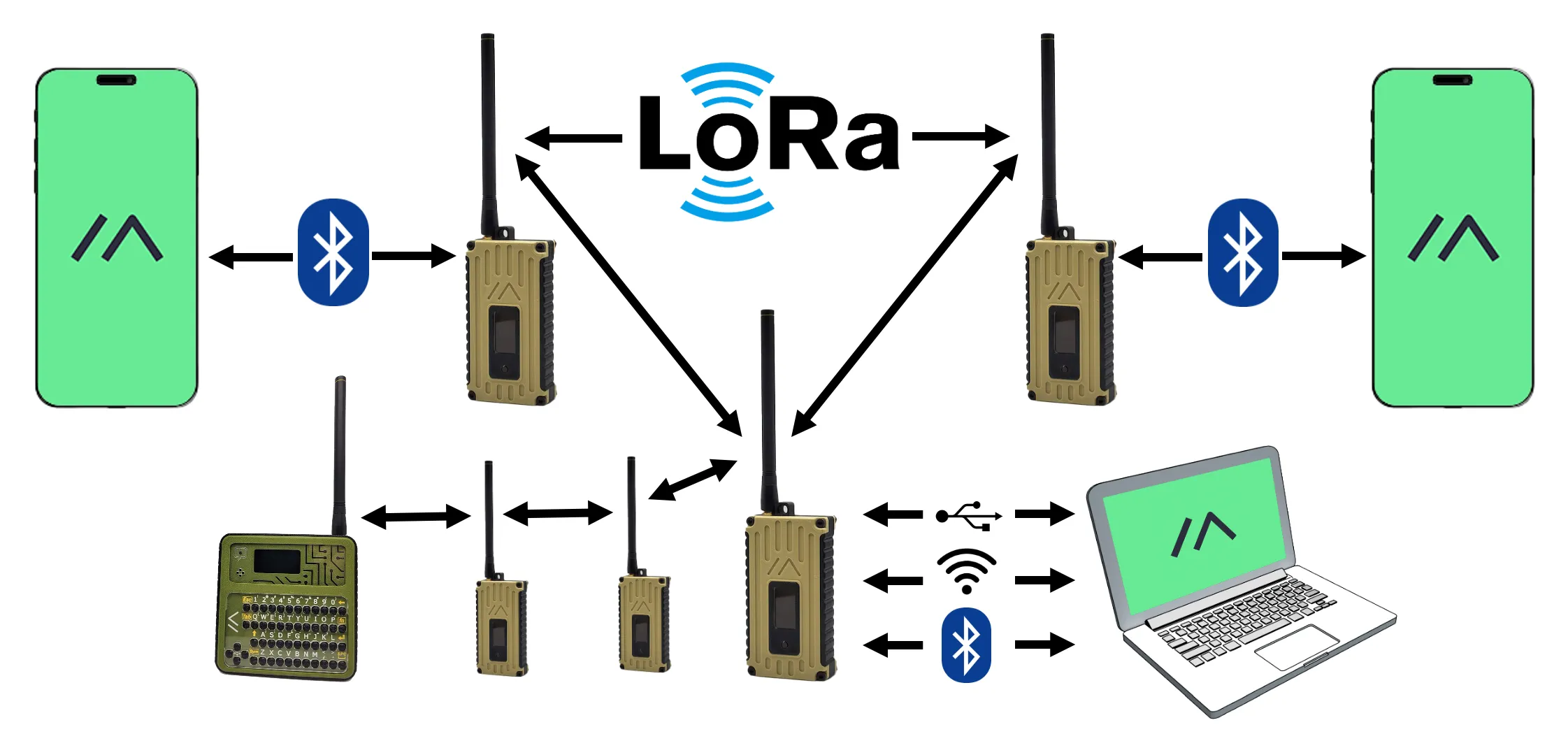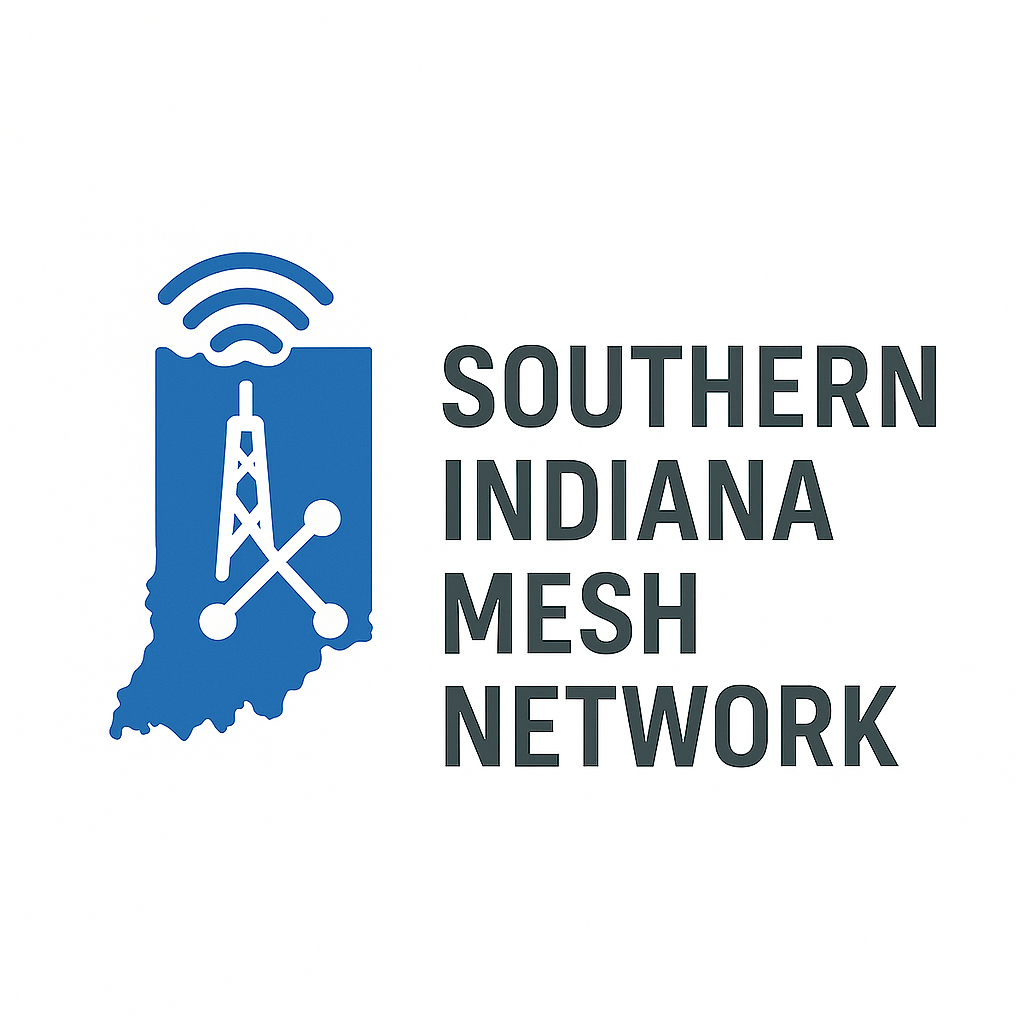All About SIMNet and Meshtastic
How It Works – Visualized

How Does It Work?
The SIMNet community has supported the deployment of solar-powered radio nodes across Southern Indiana. These devices operate on the 906.875 MHz frequency using the LoRa protocol and Meshtastic open-source firmware. Each device becomes part of a "mesh," relaying messages to others. Users can connect via Bluetooth to a nearby device or carry their own node, which also acts as a repeater. Messages hop from device to device, extending the network’s reach and reliability.
Device Capabilities
Meshtastic nodes use the LoRa radio protocol which allows them to transmit over several miles using minimal power. Nodes can be powered with USB, battery, or small solar panels. Each node increases network coverage by forwarding messages to others.
Explain It Like I'm 5
Imagine you're in class and want to send a short note to everyone. You write your note and hand out copies to your neighbors. They do the same, until everyone has the message. If some notes get lost, others still pass it on. Now imagine your note is in a secret language only your friends can read. Everyone passes it along, but only your friends can understand it. That's how encrypted messages work with Meshtastic. Instead of paper, we use radio waves. And instead of batteries, some radios are powered by the sun!
What Can It Do?
- Broadcast Messages: Public messages on the Primary Channel are visible to anyone connected to the mesh—great for alerts or announcements.
- Group Channels: Share encrypted messages with a specific group, like a neighborhood watch or event team. Members join using a shared encryption key.
- Direct Messaging: Send encrypted messages to individual users—like secure texting, but off-grid.
- Location Sharing: Share your real-time location (optional) so others can see you on the map.
- Global Gateway (MQTT): If someone nearby runs a gateway, your local mesh can link up with global ones, connecting communities worldwide.
- Telemetry & Sensors: Nodes can report power levels, signal strength, or weather data if connected to sensors.
Learn About SIMNet & Meshtastic
What Is A Mesh Network?
A mesh network is a group of interconnected devices, or nodes, that communicate directly with one another. Unlike traditional networks, mesh networks are decentralized, meaning they do not rely on a central hub like a router or cell tower. If one node fails, the network still works by routing data through other nodes.
Why It Matters
Mesh networks are vital during power outages, internet failures, and natural disasters. They provide communities with an independent communication infrastructure that is both resilient and locally controlled.
Common Use Cases
- Emergency Preparedness: Stay connected even when cellular networks are down.
- Off-grid Messaging: Communicate at remote worksites or hiking trails.
- Event Coordination: Festivals, marathons, and outdoor events benefit from local mesh comms.
- Neighborhood Safety: Coordinate efforts among neighbors for storm readiness or search-and-rescue.
Why Use Meshtastic Instead of Cellular or Internet?
The mesh network operates fully off-grid and independently of major infrastructure. Cellular towers can go down during storms or be overloaded at events. Internet connections can fail during power outages. Meshtastic-based nodes keep working regardless of these conditions.
Battery Life & Range
Devices can last for days or weeks on a single charge and reach 2 to 10 miles depending on conditions. Mounting a node on a water tower or tall building can provide regional coverage, especially in rural Southern Indiana.
How SIMNet Differs From APRS
APRS (Automatic Packet Reporting System) is a popular packet radio system used by licensed amateur radio operators. SIMNet-supported mesh devices differ in a few key ways:
- No License Required: Our network uses ISM band LoRa radios, so anyone can participate without FCC certification.
- Modern Encryption: All messages sent through Meshtastic are end-to-end encrypted by default.
- Mobile Friendly: Meshtastic offers official apps for Android and iOS to interface with nodes easily.
- Low Barrier to Entry: Devices are available for under $50, much cheaper than traditional ham gear.
- Text-First: Unlike APRS which is optimized for position reporting, Meshtastic is optimized for short message communication.
Use It Today
The mesh is live and growing across Indiana. All you need is a LoRa-compatible Meshtastic device and the mobile app to get started.
